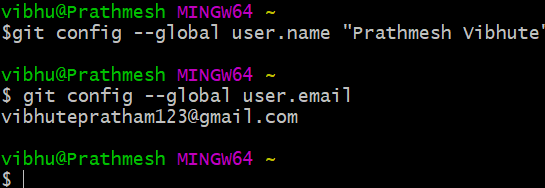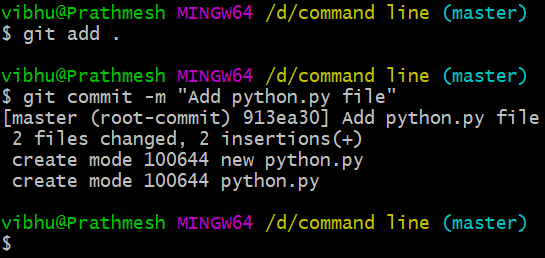Day 9 : Deep Dive in Git & GitHub for DevOps Engineers
 Prathmesh Vibhute
Prathmesh Vibhute
In the realm of modern software development and DevOps practices, proficiency in version control systems is indispensable. Among these, Git and GitHub have emerged as quintessential tools for managing source code, collaborating on projects, and facilitating continuous integration and deployment workflows. Let's delve into the intricacies of Git and GitHub, their importance, and practical usage for DevOps engineers.
What is Git and Why is it Important?
Git is a distributed version control system designed to handle everything from small to very large projects with speed and efficiency. It allows multiple developers to collaborate on projects simultaneously, tracking changes to source code and facilitating seamless integration of contributions. Git's importance lies in its ability to streamline development workflows, maintain a comprehensive history of changes, and ensure the integrity and stability of codebases across different environments.
Difference Between Main Branch and Master Branch
Traditionally, the default branch in Git repositories was named "master." However, in recent years, there has been a movement in the tech industry to replace the term "master" with more inclusive language. Consequently, many projects have transitioned to using "main" as the default branch name. Functionally, there is no inherent difference between "main" and "master" branches in Git; they both serve as the primary line of development and typically represent the latest stable version of the codebase.
Git vs GitHub: Understanding the Difference
Git and GitHub are often mentioned interchangeably, but they serve different purposes in the development lifecycle. Git is the version control system itself, providing the framework for managing and tracking changes to source code. On the other hand, GitHub is a web-based platform built around Git, offering additional features such as remote repositories, collaboration tools, issue tracking, and continuous integration services. While Git is primarily used for version control locally, GitHub extends its functionality by enabling centralized collaboration and project management in a cloud-based environment.
How to Create a New Repository on GitHub
Creating a new repository on GitHub is a straightforward process:
Steps:
Log in to your GitHub account.
Click on the "+" icon in the top right corner and select "New repository."
Enter a name for your repository, choose visibility settings (public or private), and add a description if desired.
Optionally, initialize the repository with a README file, specify a .gitignore file, or choose a license.
Click on "Create repository" to finalize the creation process.
Difference Between Local & Remote Repository and Connecting Them
A local repository resides on your local machine and contains the complete history of changes to your project. It serves as the primary workspace where developers make modifications, stage changes, and commit updates. On the other hand, a remote repository exists on a server, typically hosted on platforms like GitHub, GitLab, or Bitbucket. It acts as a centralized hub where developers can share their changes, collaborate with others, and synchronize their work.
Task 1: Set User Name and Email Address
Use the following Git commands to set your user name and email address:

Task 2: Create a Repository on GitHub and Connect Locally
Create a new repository named "DevOps" on GitHub following the steps outlined earlier.
In your local terminal, navigate to the directory containing your project.
Initialize a Git repository if you haven't already done so:

Link your local repository to the remote repository on GitHub using the repository's URL:

Task 3: Create a New File and Push to GitHub
Create a new file named "python.py" within the "DevOps" directory and add some content to it.
Stage the changes and commit them locally:

Push the committed changes to the remote repository on GitHub:

This command pushes the changes to the "main" branch on GitHub. If you're using the "main" branch, replace "master" with "main" in the command.
Conclusion :
Mastering Git and GitHub is essential for DevOps engineers to effectively manage codebases, collaborate with team members, and automate software delivery pipelines. By understanding the fundamentals of version control and leveraging the capabilities of these powerful tools, developers can streamline development workflows and deliver high-quality software with confidence.
I'm confident that this article will prove to be valuable, helping you discover new insights and learn something enriching .
thank you : )
Subscribe to my newsletter
Read articles from Prathmesh Vibhute directly inside your inbox. Subscribe to the newsletter, and don't miss out.
Written by
